The proposed location of a new Maplewood Richmond Heights preschool building, should Proposition K pass on April 7, was unveiled Monday evening, along with a preliminary rendering of the building.
Maplewood Richmond Heights School District board members, teachers, administrators and an architect met with approximately 50 Maplewood and Richmond Heights residents in the MRH Early Childhood Center gym to explain the plan and hear concerns.
See also: MRH Prop K: cost to home owners, MRH faces problems of being a ‘destination district’
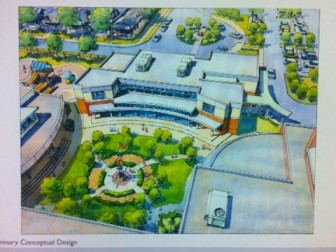 The new building, with eight to ten preschool classrooms, would sit on the current ECC parking lot. Funds from the bond issue would be used to buy approximately an acre to the west of that for parking—part of what is now a parking lot for the Volvo dealership.
The new building, with eight to ten preschool classrooms, would sit on the current ECC parking lot. Funds from the bond issue would be used to buy approximately an acre to the west of that for parking—part of what is now a parking lot for the Volvo dealership.
If passed, superintendent Karen Hall said the project would take approximately 18 months from start to finish.
Kindergarten would move into the existing preschool space, and would be renovated to be appropriate for that age group, and second grade would move to the present ECC building, which would would open up six classrooms at the elementary school, so the modular unit could be removed.
She said if it doesn’t pass, more modular units would be installed and classes would be crowded.
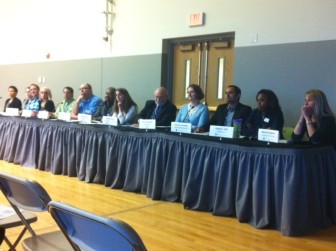
Though there were many supportive comments, a handful of residents had questions.
Jeannine Lewis, who said she had two children go all the way through the district, was concerned about efficient use of tax money—making the best use of the space to accommodate the maximum number of students.
She said the setup of the elementary school is wasteful. “The cafeteria has beautiful windows,” she said. “Couldn’t they have put the cafeteria—for the 30 minutes the kids are there—put that underground and use that space for classrooms? Light is a wonderful thing, but as a taxpayer, I only have so much income.”
Superintendent, Karen Hall said buildings with natural light contribute to the education. Sue Pruchnicki, with Bond Architects, said the exposure leads to improved test scores.
A resident of Burgess Avenue, currently along the west border of the school, asked how the addition would affect traffic.
Pruchnicki said the plan is to make Burgess off Laclede Station Road two-way so traffic could enter and exit off Laclede Station, which would take it off Burgess by the the school, and Comfort Avenue. She said the city would need to approve changing Burgess to two-way. Mayor Jim White was in the audience.
Dan O’Sullivan, who has filed to run for the school board on April 7 against incumbents Wesley Robb and Ralph Posley, asked if passage of Prop K would require a correlating increase in support spending. Board member Ray Crader said positioning the new building near the others would make it possible to share some resources, so expenses wouldn’t increase proportionately.
Crader did say that with more students coming into the district, and the middle school and high school maintaining students, an operating tax levy may be one to two years away.
Subscribe to the 40 South News daily newsletter
Wanda Walters, a Maplewood resident since 1979, said MRH “came up short” back then, and put her children in private schools rather than MRH. She said needed convincing that the school district was worth her contribution.
Hall said the district has gone through a transformation, which began around 1999 to 2000. She said the schools are receiving national recognition. The high school, in the past 18 months, has received national awards for academics and fine arts. She offered to take Walters on a tour any time.

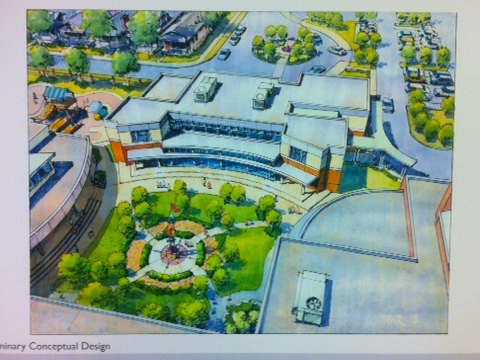
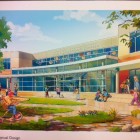
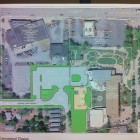
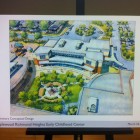
PJ – Please expound on this common conversation point. What programs and services? Thanks.
“Many tax payers, families and teachers that are familiar with the district’s operations are very aware of excessive administrative costs and spending on programs and services for which there is no evidence of effectiveness. It is a common conversation topic in the community.”
Support the schools.
And let’s build a veteran’s memorial & let’s build a Ryan Hummert memorial, a new firehouse, let’s build a new school, & let’s build this & that…….on & on. All of those things sound wonderful, We’re really not opposed, but our income has not increased, in fact, lucky to still have jobs….hours cut, no raises, no bonuses, real estate taxes are sure to increase this year……now is just not the right time for all this spending, spending, spending…..
We need strong public schools…and MRH facilities have improved considerably over the past decade. Parent support has improved too. It is important for voters to consider a few facts before citizens fund the construction of another building. MRH has operated at a cost per student $14,595.31 from 2012-2014. This is 32.8% higher than the state average cost per student during the same period ($9,805.92). Parents want the very best for their children, including new facilities, but the district is asking all citizens – not just parents – to finance new construction. It seems appropriate for parents and citizens to demand that school district board members study critically the operating costs, especially administrative overhead, for ways to achieve the primary goal – effective education. Buildings do not improve student:teacher ratios or academic performance. Teachers do. Let us invest more in teachers…not buildings. MRH employed, on average, 1 administrator for every 108 students during 2012-2014. Contrast this to the state norm of 1 administrator for every 195 students. At 108:1, the MRH administrator to student ratio is almost double the state average; it is higher than nearby districts of Kirkwood (254:1), University City (154:1), Webster Groves (214:1), and Clayton (208:1). (All data presented is the average of 2012-2014). Voters should make themselves aware of MRH’s total costs per student as well as administrative costs within the context of other factors when casting their votes on April 7.
Data Source:
Missouri Department of Elementary and Secondary Education
http://mcds.dese.mo.gov/quickfacts/SitePages/DistrictInfo.aspx
PJ – Your statements that “buildings do not improve student:teacher ratios” and “let us invest in more teachers….not buildings” are nonsensical. It’s like saying, “It’s not money that’s important; it’s the budget.” Teachers have to teach somewhere! There’s nowhere for new teachers to go in district. They have maxed out every nook and cranny available. The speech therapists at the ECC meet in a corner of the library. Certain staff have their “offices” in closets. Why don’t you request a tour of the ECC? I’m sure they would be happy to show you how little space they have to hire these new teachers.
The building is needed precisely so that we can invest in more teachers. These are not either/or propositions. The former is absolutely needed for the latter. Would you be okay with classes meeting in hallways so that we can hire more teachers? That is what the ECC and the elementary school are up against.
I have toured the ECC. It is very nice. Our community should be very proud of the architect’s design. But effective schools are not effective because of building design…no matter what a biased architect may say.
The school district and community are in a difficult position. The school board members and administrators believe that a new building is only way to deliver on their obligation to the community — a high quality education for children. Parents whose children attend the school will always want new buildings, smaller classes, faster computers, etc. The problem is that the proposition may not be compelling to the general taxpayer who has been struggling in the weak economy.
Many tax payers, families and teachers that are familiar with the district’s operations are very aware of excessive administrative costs and spending on programs and services for which there is no evidence of effectiveness. It is a common conversation topic in the community.
Propositions like Prop K are led by good people who really care about children. But in a democracy, these good people must convince other good people to support the cause. The current rationale for increasing taxes may not be compelling to many good people who also care deeply about the community and children. Given the fact that student:teacher ratios are already very low, increasing it a bit may not be detrimental. While class size is a known factor for student success, published research has shown the upper limit for declining student performance significantly higher than where MRH would be. Gains associated with small classes generally appear when the student:teacher is reduced 20:1, and even these studies are based on state policy changes in communities with higher poverty than MRH. Per the State of Missouri, the average class size in MRH elementary school 16:1. It varies a bit within the building, of course. Based on this research, a 25% increase in class size may not be material, in terms of the school’s ability to deliver a high quality education. Of course, many may disagree with this analysis and still demand very low student:teacher ratios. It is just important to share facts and let the public decide. After all, parents and school administrators are asking property owners, most of whom have no children in the schools, to pay for the proposed building.
PJ – You’re changing your argument. Your original comment did not address building design but rather the existence of new space entirely. Regardless of their design, new classrooms most certainly do improve performance when they relieve overcrowding.
The ratio in my child’s first grade class is 20:1. I know plenty of young families in surrounding districts, and I have yet to meet a parent whose child has a ratio as high as this. The 13:1 number published on the MRH website misrepresents the class size in K-1, because it includes Pre-K stats. I think it would be helpful for someone from the district to come on here and explain why the ratio is listed as 13:1 and 16:1 when in fact most of us who have kids in the district know they are significantly higher than this.
Each year, the number of children that are entering kindergarten is rising by at least 5-10, sometimes even more. They don’t know how many will register in a few weeks, but it could be as high as 140. The first grade class is 125 students. That will likely increase the class size in next year’s kindergarten classes to 22:1.
The waiting list for the preschool is 50 deep. It’s hard to walk around our streets and not notice how many new families there are with pregnant mothers or parents walking with strollers. The administration sees the trajectory and is acting in the best interests of the children. Smaller class size is especially critical in the early years. I, for one, am very impressed that the teachers can keep 20 squirming first graders in line as is. The K and 1st grade teachers at the ECC don’t have aides.
I appreciate your use of statistics (and that site is great), but I don’t think the ones you have chosen tell a whole story. Each of those nearby districts has significantly more students than MRH, as I think Clayton is closest and they have 2x as many kids. Kirkwood has 5x as many kids. The problem with administrators is that you need them for all the schools, and those districts have bigger schools that can share administrators.
In fact, the plan proposed by the district to add a building at the ECC site specifically aims to not increase the number of administrators needed. If they proposed a new building in a brand new location, they would need a new Principal and new staff. Expanding the ECC allows them to share existing staff.
My oldest daughter is in kindergarten and my youngest will start preschool in the fall. My husband and I purchased a home in Maplewood in 2012 because of the strength of the school district. We have been moved beyond words by the commitment and dedication of every teacher, every administrator, every staff member with whom we have had contact. Facilities, environment, lighting and the use of space all do play a very significant role in student achievement. Let’s not forget, though, that student achievement might be most greatly affected by small class sizes. Small class sizes are critical for our kids to learn and thrive. Prop K ensures our class sizes remain small. If Prop K doesn’t pass, class sizes have to go up and we have to increase the use of portable units. I can’t help but think of the impact on our amazing teachers who daily instill a love of learning in our kids. The best way to support our kids and their teachers is to vote yes on Prop K.
I am an art teacher in another district WHERE I AM QUITE HAPPY. However, as a resident of Maplewood for over twenty years I have noticed the waste of taxpayers money with PURCHASED sculptures, chandeliers and such. Why the students not asked to make them instead perplexes me. Money could have been saved and artwork displayed. I THINK MRH schools spend like this is Clayton or Ladue. Our taxes are insane. I want kids to benefit but the budgets are improper with arbitrary spending on poor choices. I WILL VOTE NO.
“Our taxes are insane.” You are wrong with this comment. Check what residents of surrounding communities are paying for property taxes and I think you would consider retracting your statement.
I’m pretty sure she is right with that statement.
I saw this comment earlier and had the opportunity to find out some more information about the perceived purchases towards artwork and decorative aspects of the schools. There are no chandeliers, and most of the artwork you see displayed in each school is student work, although I can understand why people might think it’s purchased because a lot of it is quite impressive!
There are pieces that have been donated by artists as well. There are a couple of Brother Mel sculptures, all of which were donated or sold to the school at a very significant discount.
One of those sculptures serves as a focal point for the fountain at the ECC (it is the only sculpture on that campus). A really cool thing happened because of that, the students from one class took a great interest in it, and following with the Reggio Emilia approach that sculpture served as an engaging instructional tool for the year to introduce new concepts and explore everything from art to mathematics.
That’s why it was placed there, and It’s these kinds of remarkably effective techniques that have elevated our district to one of distinction, and also reduce the need for costly interventions later.
Joan Margaret, if you’ve lived in Maplewood for over twenty years, then you haven’t told your whole story. I’ve lived in Richmond Heights for nearly that long–long enough to remember when no one was moving into our neighborhoods and Maplewood, in particular, was an area that people in the region avoided. If you’re going to talk about tax rates, which are NOT so insane when you look at Clayton, UCity and Ladue, you also need to discuss how much your property value has increased. When you sell and make you huge capital gain, you can thank the school district. Without improved schools, I promise you that our property values would be going down. When you sell your house, and it’s snapped up right away, it will be by a young family wanting to move into our school district.
Also, I hope you read Layne’s comment about the art. I just don’t think you’re right, based on my own recent experience in MRH schools.
I attended the meeting last night. A good job was done by all of being clear and concise in answers and listening to the concerns and praise of residents.
One excellent aspect of this site plan is that it also addresses the traffic flow issues that are experienced daily at the ECC location. I appreciate that thought was given to ‘maximizing’ our tax dollars and solving a secondary problem while also addressing overcrowding. Provided the City approves (and I don’t see why they shouldn’t), making Burgess off of Laclede Station 2-way and serving as the entrance to the parking lot will go a long way towards solving traffic woes.
As someone who was on the fence about this, the site plan and building rendering have swayed me to become a definite yes. Great job securing the Volvo parcel.
You mean Volvo of Brentwood…that’s located in Maplewood?
I wish someone could make them change their name.
There was an abundance of positive feedback on our fantastic district last night. They have clearly put a lot of careful thought into these plans to ensure it is what is best for our kids, community, and it is a wise use of taxpayer money. It was very moving to hear so many parents and community members speak up about what a positive impact MRH has had on families and the strength of our neighborhood.
Panelists did a great job of explaining that open space and natural light are deliberate choices in the design to support learning. I’m thankful we have such knowledgeable and passionate folks at the helm who think of these things!
I love the natural light that the elementary and early childhood building use. On sunny days the preschool doesn’t have to turn lights on. Let’s give our children a nice space to learn!